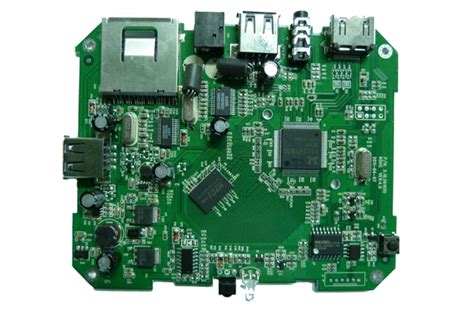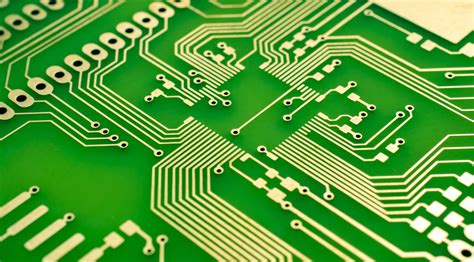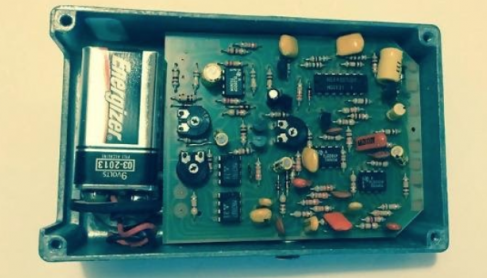Flex pcb projects
Designing Flexible PCBs for Wearable Technology
Designing flexible printed circuit boards (PCBs) for wearable technology is an intricate process that requires a deep understanding of both the materials involved and the specific demands of wearable devices. As wearable technology continues to evolve, the need for more sophisticated and adaptable PCBs has become increasingly apparent. Flexible PCBs, often referred to as flex circuits, offer a unique solution to the challenges posed by the dynamic and compact nature of wearable devices. These circuits are designed to bend, fold, and conform to various shapes, making them ideal for applications where traditional rigid PCBs would be impractical.
One of the primary considerations in designing flexible PCBs for wearable technology is the choice of materials.
Unlike rigid PCBs, which are typically made from fiberglass-reinforced epoxy, flexible PCBs are constructed using materials such as polyimide or polyester films. These materials provide the necessary flexibility while maintaining electrical integrity and thermal stability. Polyimide, in particular, is favored for its excellent thermal resistance and mechanical properties, making it suitable for the demanding environments in which wearable devices often operate.
In addition to material selection, the design of flexible PCBs must account for the unique mechanical stresses they will encounter.
Wearable devices are subject to constant movement and bending, which can lead to mechanical fatigue over time. To mitigate this, designers must carefully consider the layout of the circuit traces and the placement of components. For instance, traces should be oriented in a manner that minimizes stress during bending, and components should be strategically placed to avoid areas of high mechanical strain. Furthermore, incorporating features such as strain reliefs and bend radii can enhance the durability and longevity of the flex circuit.
Another critical aspect of designing flexible PCBs for wearable technology is the integration of various functionalities within a limited space.
Wearable devices often require a multitude of sensors, communication modules, and power management systems, all of which must be seamlessly integrated into the flex circuit. This necessitates a high level of precision in the design process, as well as the use of advanced manufacturing techniques. Techniques such as laser direct structuring and additive manufacturing can be employed to achieve the fine feature sizes and complex geometries required for modern wearable devices.
Moreover, the design process must also consider the thermal management of the device.
Wearable technology is often in direct contact with the human body, necessitating careful management of heat dissipation to ensure user comfort and device reliability. Flexible PCBs can be designed with embedded thermal vias and heat spreaders to effectively manage heat distribution across the circuit.
In conclusion, designing flexible PCBs for wearable technology is a multifaceted endeavor that requires careful consideration of materials, mechanical stresses, space constraints, and thermal management. As wearable devices continue to become more prevalent and sophisticated, the demand for innovative flex circuit designs will only increase. By leveraging advanced materials and manufacturing techniques, designers can create flexible PCBs that not only meet the functional requirements of wearable technology but also enhance its performance and user experience. Through continuous innovation and refinement, flexible PCBs will undoubtedly play a pivotal role in the future of wearable technology.
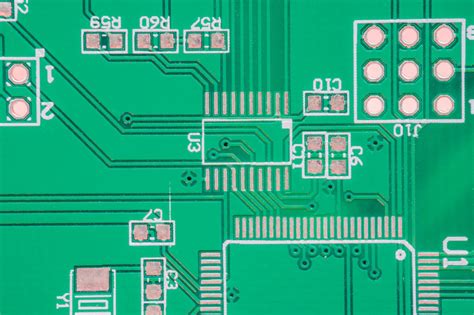
Innovative Applications of Flex PCBs in Medical Devices
Flexible printed circuit boards (flex PCBs) have emerged as a transformative technology in the realm of medical devices, offering a myriad of innovative applications that enhance both functionality and patient care. As the medical industry continues to evolve, the demand for more compact, reliable, and versatile electronic components has grown exponentially. Flex PCBs, with their unique ability to bend and conform to various shapes, provide an ideal solution to meet these demands, enabling the development of advanced medical devices that were previously unimaginable.
One of the most significant advantages of flex PCBs in medical applications is their capacity to facilitate miniaturization.
Medical devices, particularly those intended for implantation or wearable use, require components that are not only small but also lightweight and durable. Flex PCBs meet these criteria by allowing for the integration of complex circuitry into a compact form factor. This capability is particularly beneficial in the design of implantable devices such as pacemakers and neurostimulators, where space is at a premium and reliability is paramount. By utilizing flex PCBs, manufacturers can create devices that are less invasive, thereby improving patient comfort and reducing recovery times.
Moreover, the adaptability of flex PCBs extends beyond size reduction.
Their inherent flexibility allows them to be integrated into devices with irregular shapes or those that require movement, such as wearable health monitors. These monitors, which can track vital signs and other health metrics in real-time, benefit from the conformability of flex PCBs, which can be seamlessly incorporated into clothing or directly adhered to the skin. This not only enhances the accuracy of the data collected but also improves the overall user experience by providing a more comfortable and unobtrusive monitoring solution.
In addition to their physical advantages, flex PCBs also contribute to the reliability and longevity of medical devices.
The materials used in flex PCBs are typically resistant to environmental factors such as moisture and temperature fluctuations, which are common challenges in medical settings. This resistance ensures that devices remain operational under various conditions, thereby increasing their lifespan and reducing the need for frequent replacements or repairs. Furthermore, the ability to design circuits with fewer interconnections reduces the risk of failure, enhancing the overall reliability of the device.
The integration of flex PCBs into medical devices also opens up new possibilities for innovation in patient care.
For instance, the development of smart surgical tools equipped with sensors and data transmission capabilities is made feasible through the use of flex PCBs. These tools can provide surgeons with real-time feedback during procedures, improving precision and outcomes. Additionally, the potential for remote monitoring and diagnostics is greatly expanded, allowing healthcare providers to offer more personalized and timely interventions.
In conclusion, the innovative applications of flex PCBs in medical devices are revolutionizing the industry by enabling the creation of more compact, reliable, and versatile solutions. As technology continues to advance, the role of flex PCBs in medical applications is likely to grow, paving the way for further breakthroughs in patient care and treatment. By embracing the unique properties of flex PCBs, the medical field can continue to push the boundaries of what is possible, ultimately leading to improved health outcomes and a higher quality of life for patients worldwide.

Challenges and Solutions in Flex PCB Manufacturing
Flex PCB projects have become increasingly popular due to their ability to conform to complex shapes and fit into compact spaces, making them ideal for modern electronic devices. However, the manufacturing of flexible printed circuit boards (PCBs) presents a unique set of challenges that require innovative solutions to ensure high-quality outcomes. One of the primary challenges in flex PCB manufacturing is the selection of appropriate materials. Unlike rigid PCBs, flex PCBs require materials that can withstand bending and flexing without compromising electrical performance. Polyimide is commonly used due to its excellent thermal stability and flexibility, but it can be costly. Manufacturers must balance material costs with performance requirements, often necessitating a thorough analysis of the application’s specific needs.
In addition to material selection, the design process for flex PCBs is inherently more complex.
Designers must account for the mechanical stresses that the board will encounter during its lifecycle. This involves careful planning of the trace layout to prevent stress concentration, which can lead to circuit failure. Advanced design software can assist in simulating these stresses, allowing for optimization before the manufacturing process begins. However, this requires a high level of expertise and experience, which can be a barrier for some manufacturers.
Another significant challenge is the manufacturing process itself.
Flex PCBs require precise handling to avoid damage during production. The thin and flexible nature of these boards makes them susceptible to tearing and other forms of mechanical damage. To address this, manufacturers often employ specialized equipment and techniques, such as roll-to-roll processing, which allows for continuous production and reduces handling risks. Moreover, maintaining tight tolerances is crucial, as even minor deviations can lead to significant performance issues. This necessitates rigorous quality control measures throughout the manufacturing process.
Furthermore, the assembly of components onto flex PCBs presents additional difficulties.
The heat-sensitive nature of flexible substrates means that traditional soldering techniques can cause warping or delamination. To mitigate this, manufacturers may use low-temperature soldering processes or conductive adhesives, which require careful control to ensure reliable connections. Additionally, the integration of components must be meticulously planned to accommodate the board’s flexibility, often involving the use of surface-mount technology (SMT) to minimize stress on solder joints.
Despite these challenges, solutions continue to evolve, driven by advancements in technology and materials science.
For instance, the development of new conductive inks and adhesives offers promising alternatives to traditional soldering methods, providing greater flexibility and reliability. Moreover, the increasing use of automated inspection systems enhances quality control by detecting defects early in the production process, thereby reducing waste and improving yield.
In conclusion, while the manufacturing of flex PCBs presents several challenges, ongoing innovations and technological advancements are paving the way for more efficient and reliable production methods. By addressing issues related to material selection, design complexity, manufacturing precision, and component assembly, manufacturers can overcome these obstacles and fully leverage the benefits of flex PCBs in a wide range of applications. As the demand for smaller, more versatile electronic devices continues to grow, the importance of overcoming these challenges becomes ever more critical, ensuring that flex PCBs remain at the forefront of electronic design and manufacturing
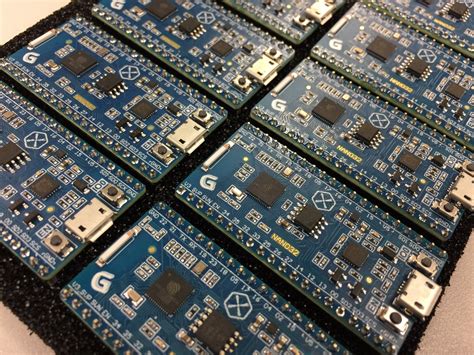
Flex PCB Integration in Consumer Electronics
Flexible printed circuit boards (flex PCBs) have become a cornerstone in the evolution of consumer electronics, offering a myriad of advantages that traditional rigid PCBs cannot match. As the demand for more compact, lightweight, and versatile electronic devices continues to grow, the integration of flex PCBs in consumer electronics has become increasingly prevalent. This trend is driven by the unique properties of flex PCBs, which allow for innovative design possibilities and enhanced functionality.
One of the primary benefits of flex PCBs is their ability to conform to complex shapes and fit into tight spaces,
which is particularly advantageous in the design of modern consumer electronics. Devices such as smartphones, tablets, and wearable technology often require intricate circuitry to be housed within limited space. Flex PCBs provide the necessary flexibility and adaptability, enabling manufacturers to design products that are not only smaller and lighter but also more robust and reliable. This adaptability is further enhanced by the ability of flex PCBs to withstand mechanical stress, making them ideal for applications where movement and bending are frequent.
Moreover, the integration of flex PCBs in consumer electronics contributes to improved performance and durability.
The reduced need for connectors and interconnects in flex PCB designs minimizes potential points of failure, thereby enhancing the overall reliability of the device. This is particularly important in high-performance electronics where consistent and reliable operation is critical. Additionally, the inherent flexibility of these PCBs allows for better thermal management, as they can be designed to dissipate heat more effectively than their rigid counterparts. This capability is crucial in preventing overheating, which can lead to device failure or reduced lifespan.
In addition to performance benefits, flex PCBs also offer significant cost advantages.
While the initial design and manufacturing process for flex PCBs can be more complex and costly than traditional PCBs, the long-term benefits often outweigh these initial expenses. The reduction in the number of components and connectors not only simplifies assembly but also reduces material costs. Furthermore, the enhanced reliability and durability of devices using flex PCBs can lead to lower maintenance and warranty costs, providing further economic benefits to manufacturers.
The versatility of flex PCBs also opens up new possibilities for innovation in consumer electronics
. As technology continues to advance, the demand for more sophisticated and multifunctional devices grows. Flex PCBs enable the integration of additional features and capabilities without compromising on size or weight. This has led to the development of cutting-edge products such as foldable smartphones and advanced fitness trackers, which rely on the unique properties of flex PCBs to deliver enhanced user experiences.
In conclusion, the integration of flex PCBs in consumer electronics represents a significant advancement in the design and functionality of modern devices.
Their ability to conform to complex shapes, improve performance, and reduce costs makes them an invaluable component in the development of next-generation electronics. As the industry continues to evolve, the role of flex PCBs is likely to expand, driving further innovation and shaping the future of consumer electronics. The ongoing research and development in this field promise to unlock even more potential applications, ensuring that flex PCBs remain at the forefront of technological advancement.

